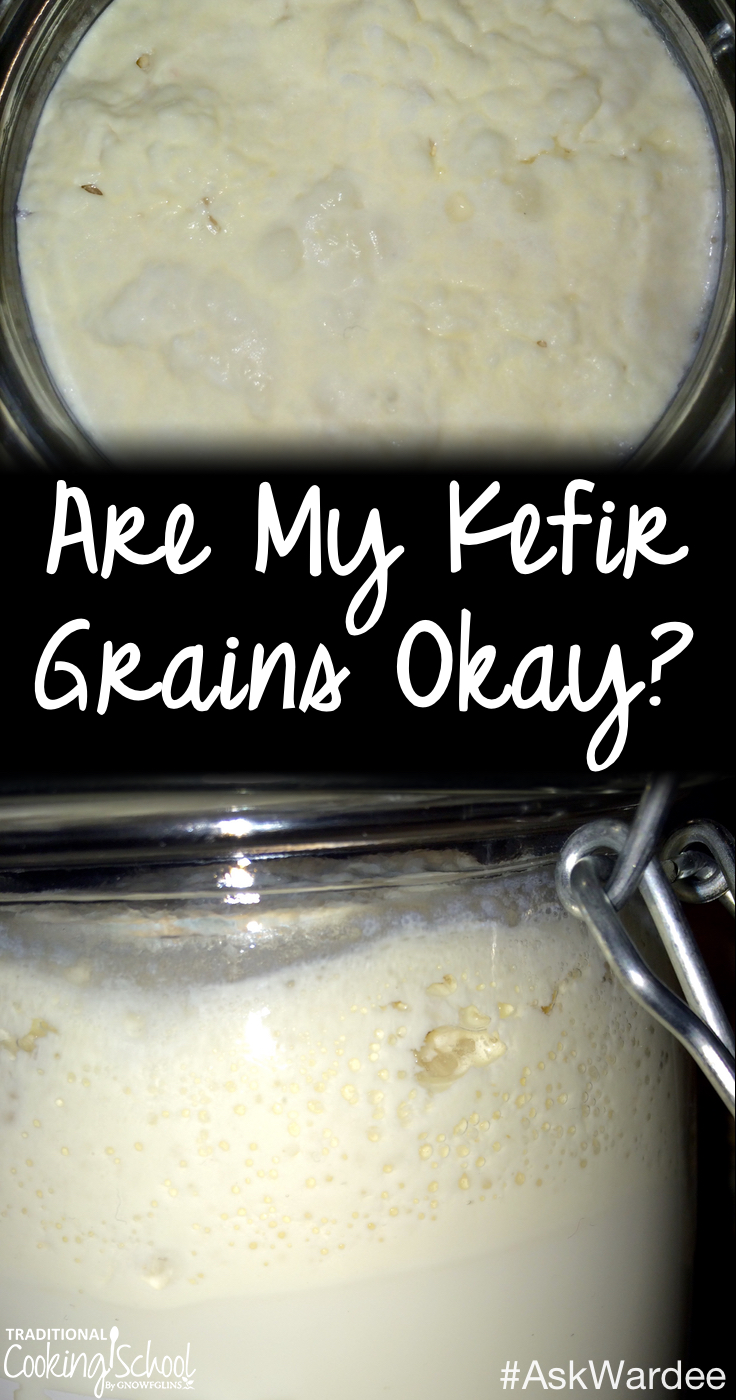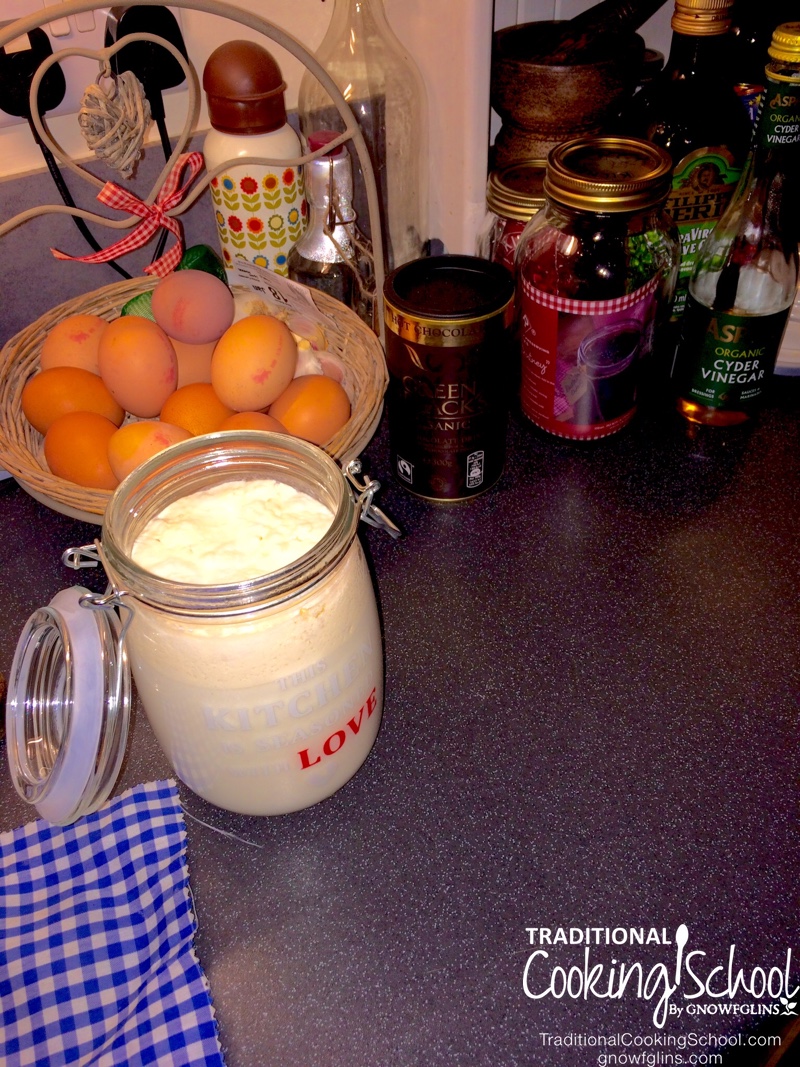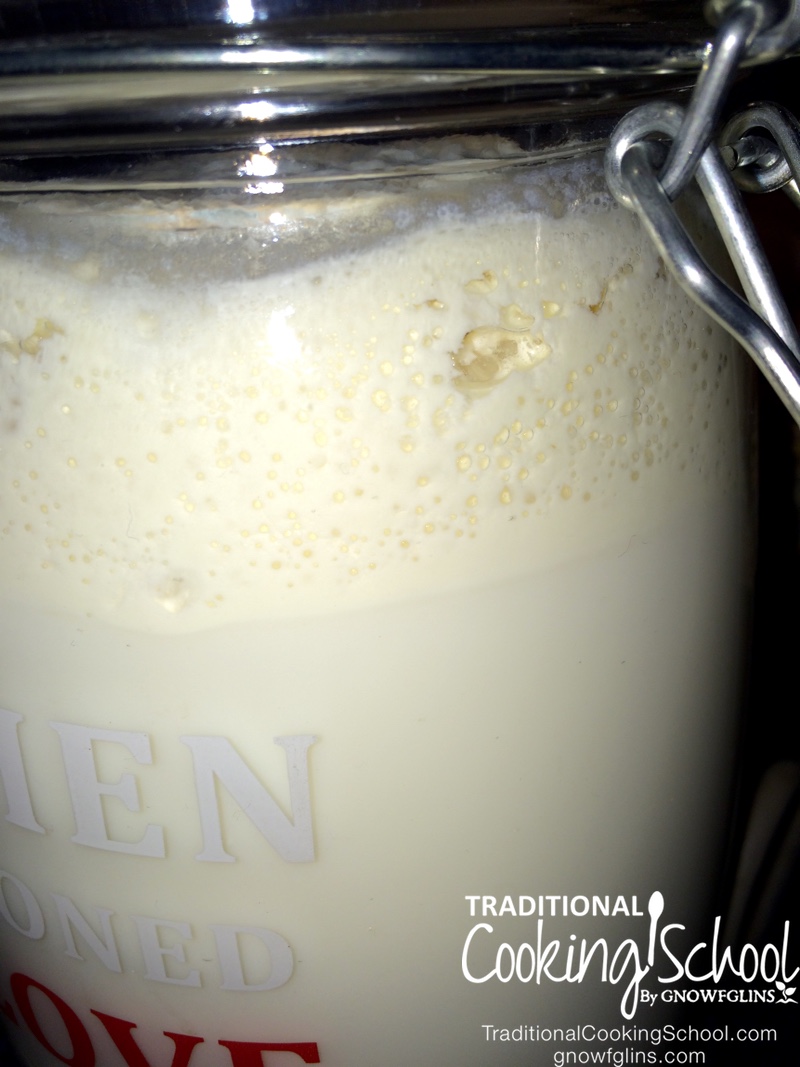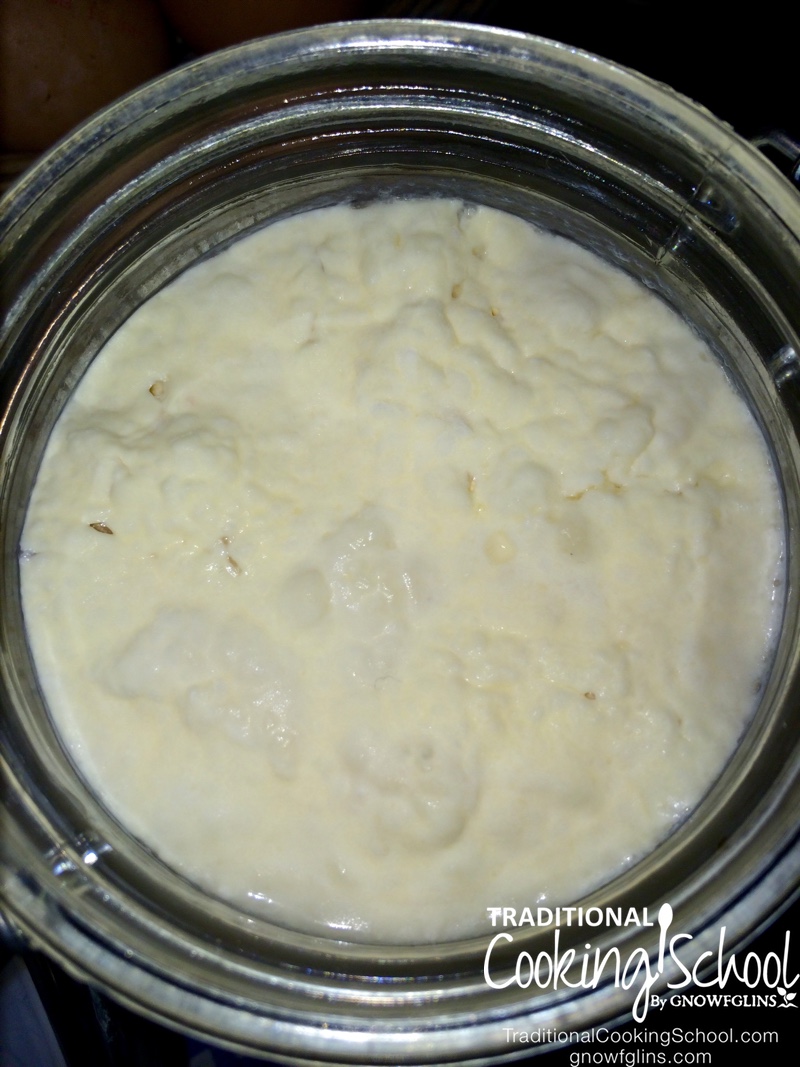
“My kefir looks ______! Can we eat it? Are my kefir grains okay?” asks Nanette on today’s #AskWardee. I’m sharing my answer below!
I broadcast #AskWardee live each Wednesday at 10am Pacific (1pm Eastern) on Periscope and Facebook Live. Both the podcast and video replay of this week’s show are below. Enjoy!
Subscribe to #AskWardee on iTunes, Stitcher, YouTube, or the Podcasts app.
The Question
From Nanette:
I went away on holiday and left my kefir grains in fresh organic raw milk in my fridge as I’d heard they will just ‘go to sleep’, but after I got back and placed them into new milk to make kefir again, this is what they looked like after 24 hours — which is the same ‘layer effect’ that I found after taking them out of the fridge the night before. I’m concerned the kefir is moldy?? It doesn’t smell ‘off’ but it does smell ‘tart’ and soured…
Are they safe to consume? I’m concerned about mold. Huge thanks in advance; you’re welcome to use my query and photos on your blog.
Hugs and Happy New Year,
Nanette
My Answer:
Your kefir looks completely normal to me. 😉


Anytime the grains change because of temperature or your kefir-making habit, they may behave differently.
I’ve seen a layered kefir like this a million times. The grains were warm and active, and the kefir over-thickened at the top.
The bubbles are from the grains consuming the milk sugar and producing gases.

Now what would be bad is thick, fuzzy grey, green, or pink mold. You wouldn’t want to eat that kefir.
But you can get the grains out, rinse them very, very well, and try a new batch.
I would eat the kefir in your pictures. If it’s not thickened on the bottom, I would gently stir so the grains have contact with the uncultured milk. Let it go longer to fully culture.
Or, if it’s all thickened, filter out the grains (they’re floating right there at the top), and start a new batch. Refrigerate the finished kefir and enjoy.
Finally, are your grains okay?
Absolutely! Keep using them. Perhaps they need some TLC after the break, but it seems to me they’re perfectly fine.
Note: it’s hard to capture everything I shared in the video in these notes, so please do watch the video for the full discussion. 🙂
Links Mentioned:
More Kefir Related Articles from the #AskWardee Show:
- What To Do With Over-Fermented Kefir? #AskWardee 111
- Help! How Do I Find My Kefir Grains? #AskWardee 051
- How Long Does Kefir Last? #AskWardee 060
- Kefir Grains Or Kefir Powder — Which Is Better? #AskWardee 040
- The ULTIMATE Water Kefir Guide (how to make it, store it, flavor it, brewing tips & MORE!)
- How To Make Thicker Milk Kefir
What Is The #AskWardee Show?
The #AskWardee is the live weekly show devoted to answering your niggling questions about traditional cooking: whether it’s your sourdough starter, your sauerkraut, preserving foods, broth, superfoods or anything else to do with Traditional Cooking or your GNOWFGLINS lifestyle.
I share tips and resources, plus answer your questions about Traditional Cooking!
The Details
When: Wednesdays at 10am Pacific / 1pm Eastern
Where: @TradCookSchool on Periscope or Traditional Cooking School on Facebook
What If You Can’t Make It?
Don’t worry. You can catch the replays or listen to the podcast!
- Come back here to AskWardee.TV; all replays will be up within hours of airing live; the print notes are always posted at the same time I go live.
- Follow @TradCookSchool on Periscope or Traditional Cooking School on Facebook to view the replay.
- Subscribe to the #AskWardee podcast on iTunes, Stitcher, YouTube, or the Podcasts app. While you’re there, be sure to leave a rating and review!
Want To Get YOUR Question Answered?
Here’s how to submit your question. If we answer it on #AskWardee, you’ll get a gift!
Or, you can…
- Tweet your question to @TradCookSchool on Twitter; use hashtag #AskWardee
- Send an email to wardee at AskWardee dot tv — add #AskWardee to your email so I know it’s for the show
Please do NOT add future questions for #AskWardee to the comments of this post because they might get missed!
Have you ever asked the question, “Are my kefir grains okay?” How do you know when your kefir is still good or when it’s gone ‘off’?
...without giving up the foods you love or spending all day in the kitchen!

2 free books:
Eat God's Way
Ditch the Standard American Diet, get healthier & happier, and save money on groceries...
We only recommend products and services we wholeheartedly endorse. This post may contain special links through which we earn a small commission if you make a purchase (though your price is the same).


Question. What about edamame? Everyone always talks about the dangers of processed GMO soy, but what about fresh organic edamame in a salad or stir-fry every so often?
Love your blog as usual and spreading the good new to all my friends to subscribe.
I think my Milk Kefir grains got wheat contaminated as they became cauliflower rice. Then a fruit fly got into the mix and I had to use it for compost in the garden. I have a few bottles of Kefir Milk in the fridge. I have used a large hole colander and just maybe I should try to grow some grains from the decanted milk, now that is an idea.
Regards, Frances from Sunny South Africa
Hi! I left my kefir grains without milk for a day and even placed them in the fridge. I didn’t have milk at the time and they started smelling acidy…Now the kefor doesnt come out as it used to..It separated weirdly..Can they be revived or leaving them with no milk was killed them? Thanks in advance!!
Hi, Valeria.
Sylvia, one of our moderators says:
One day out of milk shouldn’t affect them too much. They may have simply been hungry! If your next batch is still off, I recommend replacing the grains.
Milk kefir can get a different odor, taste or texture sometimes, and it’s usually due to one or more of these things:
Change in temperature of your home or the room where you’re culturing the kefir. If the temp is a little too high, the kefir can over-culture.
Too many Kefir grains for the amount of milk you’re using, if your kefir have multiplied, the grains may need to be divided.
The culturing time may need to be adjusted. Over cultured Kefir can get that strange acidic odor.
Kefir often smells like yeast. If it smells like rotten yeast, then it needs to be replaced.
~Danielle, TCS Customer Success Team
Hi My name is Carol,
I have removed my Kefir from the freezer. They had been frozen for eight month’s. I have been trying to revive them. They are a correct color but do not have any yeast odor. In fact they do not have any odor at all. I had defrosted them in milk a few times but was not sure that they were viable. Today after 48 hours in a dark cabinet i removed them to find the milk had a curdled appearance. The grains again looked normal but had not grown any that I could see. I put the rest of the bottles back into the storage area to see if they needed some more growing time. Question – Do you think the grains are alive or should I discard them and get new ones????? Thank you in advance for your thoughts.
Hi, Carol,
You may find this article helpful: https://traditionalcookingschool.com/food-preparation/why-kefir/
If the grains and milk don’t have mold or it doesn’t smell bad I would strain the milk out and try another fresh batch to see what happens. If it starts to thicken nicely and smells good I would say they revived well.
~Peggy, TCS Customer Success Team